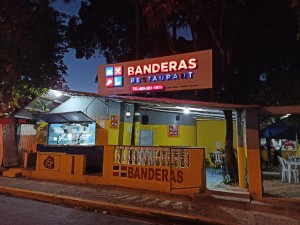EAT IN ASIA / Destinations / Other destinations / Northern america / Dominican republic
What is La Bandera Dominicana and el Plato del día?
Tags: DOMINICAN REPUBLIC

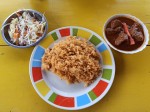

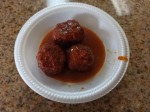

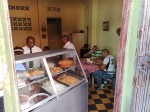
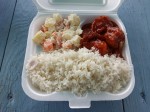


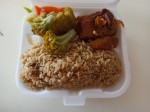
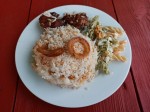

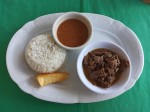
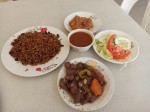



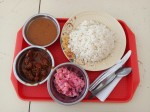
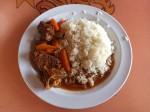
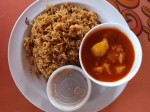
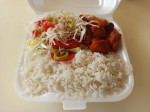
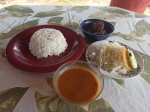
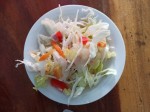
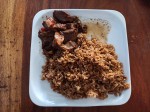
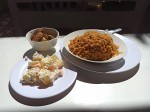
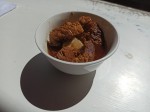

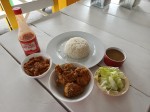


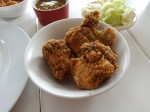
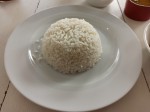
Every country has its own staple dish. For example for Thailand it is Pad thai, for Costa Rica, it is casado. And, what is in the Dominican Republic? La Bandera or plato del día is the most popular and famous Dominican dish. Every day, no matter whether that is a working day or weekend, plato del día is served in many local canteens – comedores, restaurants and at stalls. Plato del día – meal of the day is a traditional Dominican dish that is served during the lunch time. Depending on the place, these operating hours may vary, but more or less, La Bandera is served from 11:30 AM till about 4 PM. Sometimes it might be even till 5 or 6 PM, but usually these comedores run out of these meals around 3 PM. That means, that the later you come, the smaller choice you have. The same applies to the opening time. If you come too early, some dishes might not have been already prepared, so the choice would be also limited. However, if you are in a hurry or extremely hungry and cannot wait a couple of minutes more, then go with it!
If you are afraid, you would not find them in touristic places as they are dedicated for local people, you do not have to worry about it. Definitively, you will be able to buy it. Just ask some local people about it. They will surely know where to find canteens serving La Bandera and they will tell you which of them is the best one and which of them is serving a really good food.
And even though you might think that this meal would not be for you, you should try it. For me, it is impossible to be in the Dominican Republic and not to know and eat it. Missing it, is like knowing nothing about the country you visit!
What is La Bandera Dominicana?
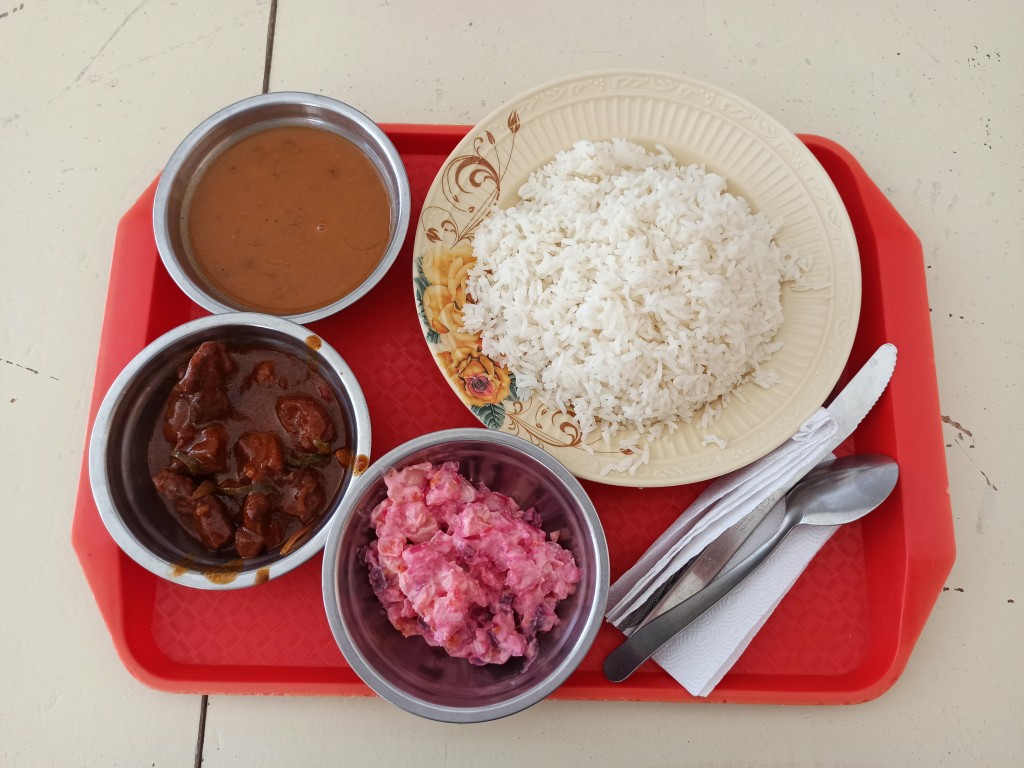
Actually, La Bandera means in Spanish a flag. But, apart from that literal meaning, it is also the name of the most popular meal in the Dominican Republic. La Bandera is so typical, so traditional, and so local, that trying it at least once is a MUST. However, as these meals are home-made and with no exact recipe, flavors may vary from place to place, and from region to another. Local, ethnic influences, climate, available vegetables, and herbs make these meals completely different. What is more, each housewife has her own recipe and method of cooking basic meal's compounds. Red beans, meat and mangú will be prepared every time in another way. The rice seasoning method is strongly influenced by local spices and herbs. All that makes each region so different and at the same time, so interesting.
La Bandera Dominicana – a short history
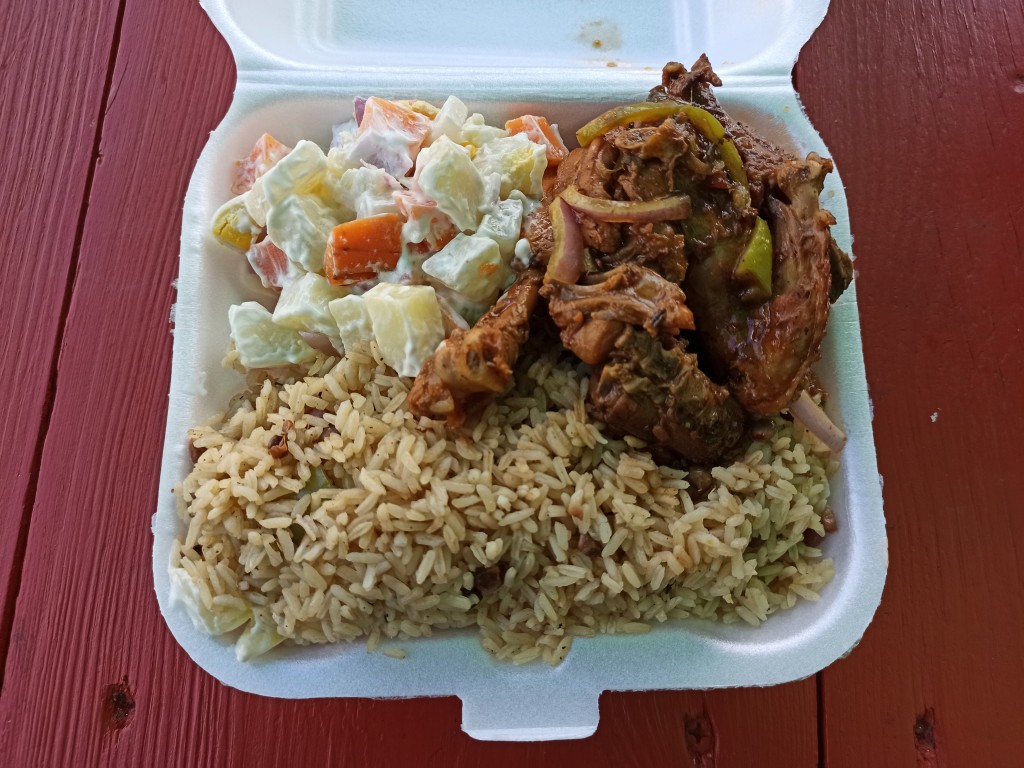
The name of the plate La Bandera appeared, probably, for the first time in the 19th century. To be more precise, in 1840, when Dominicans declared their independence, and stopped being under Haitian rule.
Later, this meal was an important dish that could nourish the nation during even the hardest time. Ingredients were basic, simple, and relatively cheap. In consequence, its different variations and combinations were affordable for almost all Dominicans.
La Bandera, known these days also as el plato del día, is still one of the most popular dishes in the Dominican Republic. It is prepared on a daily basis; it is cheap and includes all ingredients that are the most liked by Dominicans. Rice or plantains, and red beans are a MUST.
So, although times change, new products appear on shelves and the daily routine changes; the lunch stays as it has been for years.
What does Dominican flag mean and how is it represented in the La Bandera dish?
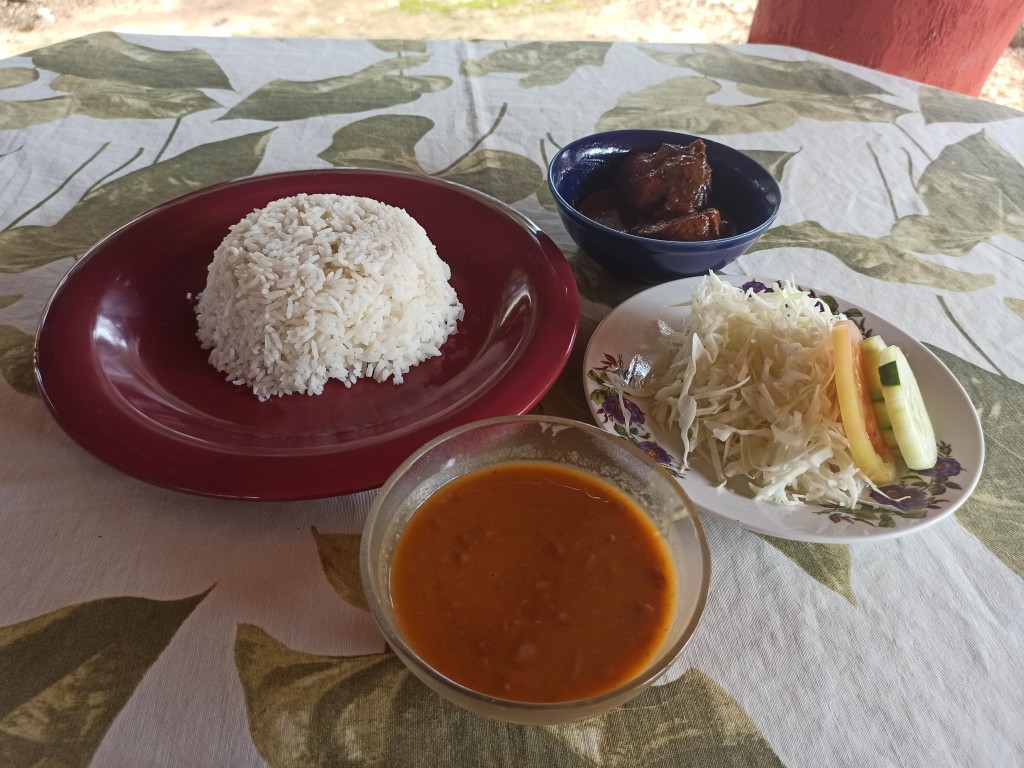
While the Dominican flag has mainly three basic colors – blue, red, and white; each color should be represented by another meal product in the dish. Thanks to that, La Bandera could integrate all national symbols.
Liberty, salvation, and blood. These three symbols are then linked to three different foods. As we have rice, beans, and meat, they represent salvation, blood, and liberty respectively. So, rice is salvation; blue is liberty symbolized by meat, and red beans represent blood of Dominican heroes.
What is in the Dominican La Bandera?
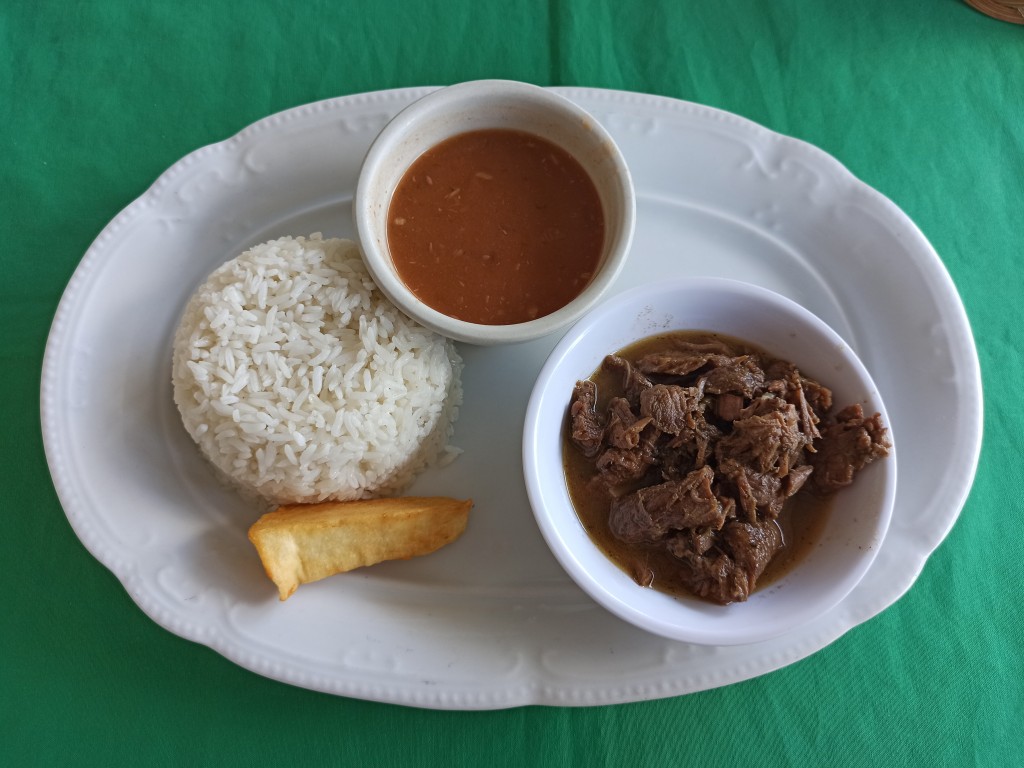
The Dominican La Bandera has three main dishes. That is rice, red beans and some kind of meat. Rice is prepared in multiple ways and colors. However, although the name might suggest using another rice variety, no matter how it is called, it is always a white rice. The difference in the color or in the name – moro or morado and amarillo, refer to the final color of the rice, what means, after being spiced.
Moro or morado, a purple one, is a white rice mixed with boiled, red beans (frijoles), or peas (habichuelas), herbs and spices. Amarillo – yellow rice, usually comes with boiled corn and also with spices and herbs. Both rice types, have a slightly yellowish or brownish color, but the amarillo one is definitively more yellow. White rice is just a plain rice with no spices.
All types of rice are mixed with a little bit of oil. Although they are served steamed, they are at the same time rather fluffy than sticky.
The main difference is in the set of herbs and spices. This general rule applies both for rice moro and amarillo. Finally, another distinguishing them point is the type of added beans to them.
What do you need to make a traditional La Bandera?
As said before, to serve La Bandera, you need to prepare three, separate dishes. It is rice, beans, and meat. Each of these foods can be prepared in a different way. So, here is brief guide to the La Bandera ingredients’ list:
Rice
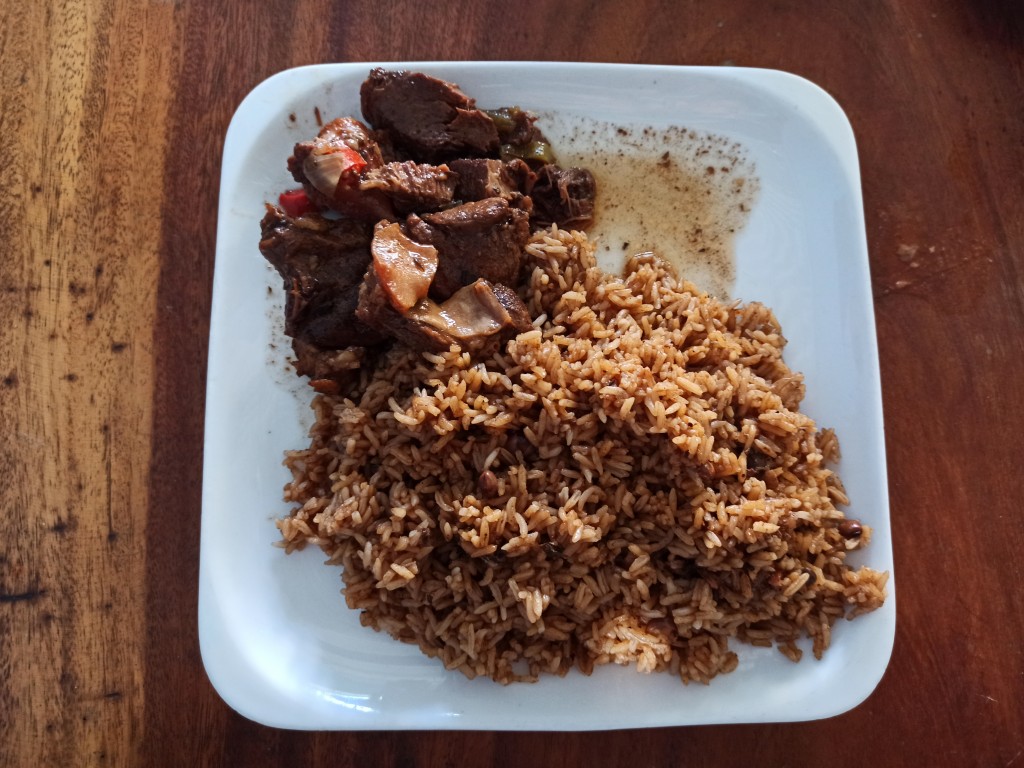
White, milled, and polished rice.
Beans
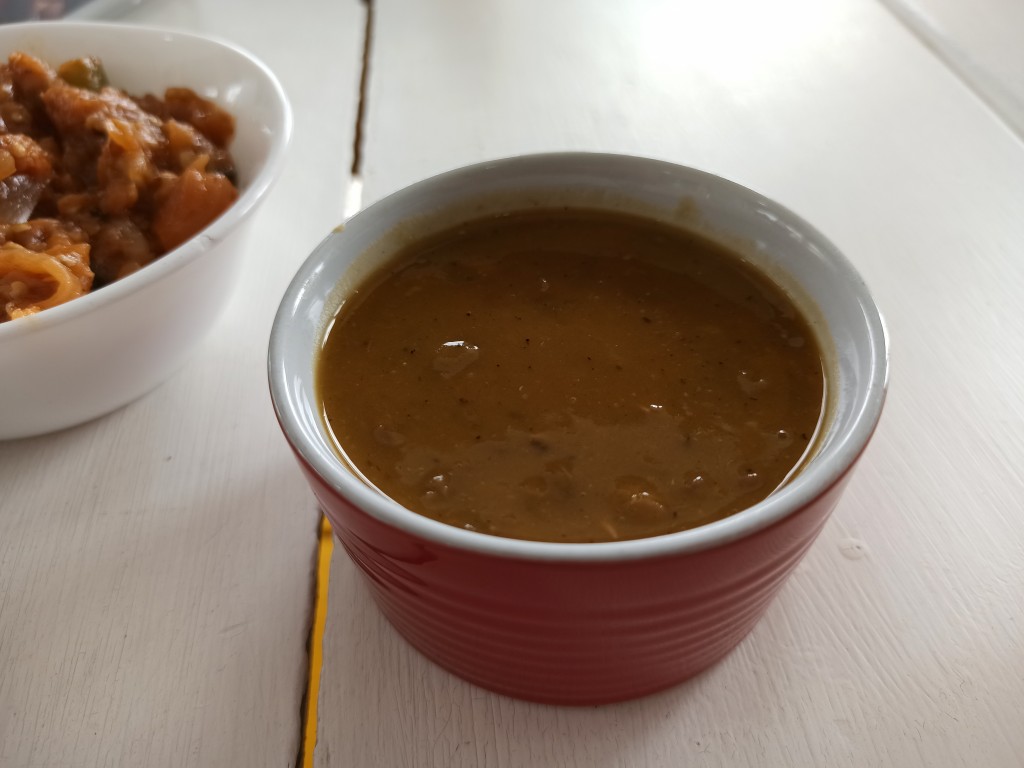
Usually red, as the red color represents heroes’ blood (heroes, that mainly fought for the Dominican independence from Haiti). However, other types of beans are allowed to be used. It can be any beans’ variety that you have, no matter whether it is black, white, red, or even if it is pigeon pea. Add whatever you have, and whatever is affordable for you.
Meat
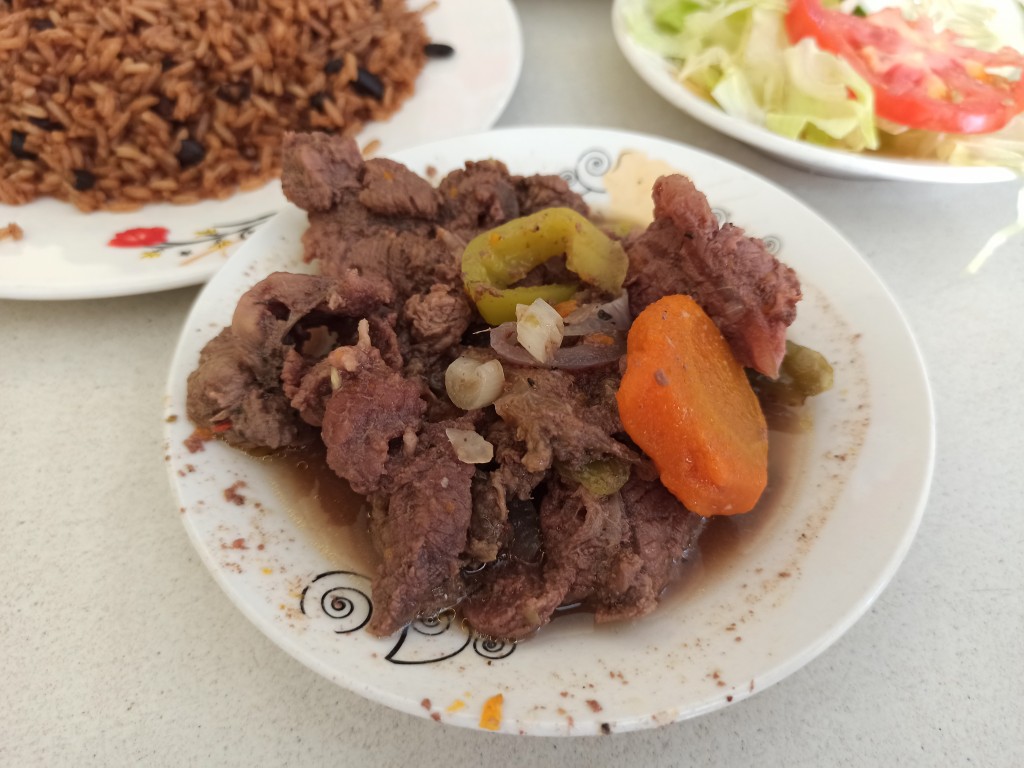
While chicken is the most popular one (because of its cost), pork and beef come just after it. Rarely, it includes fish or lamb, but as said before. It is allowed to add to La Bandera whatever you have at the moment, and what is within your daily budget. La Bandera is a meal for all society’s classes. For these poor and for these rich. And although; at the very beginning, in the 19th century; the meal was mainly popularized among the poorest population, it is still served in all houses, no matter how rich or poor they are. The only thing or rather condition that should be fulfilled, is that the meat should be stewed. And that is all.
Where to eat La Bandera in the Dominican Republic?
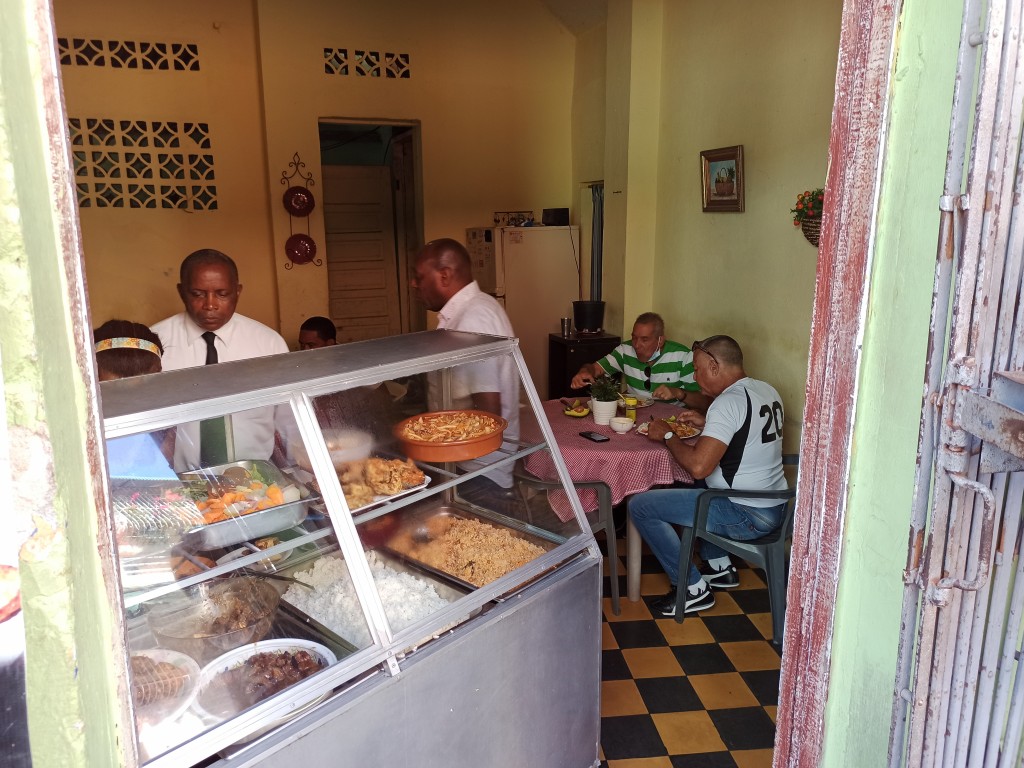
Well, the answer is very easy and simple. Everywhere. Literally, everywhere. No matter, how big or small the town or village is. No matter, in which district you are. No matter, in which region of the country you stay. Everywhere you will find a comedor or a food stall that serves plato del día. La Bandera is present in every place, and as it was created by, and for poorer society’s classes, it is relatively cheap and affordable.
However, if you cannot find any place like that, just ask any Dominican about it. It really does not matter what he or she does for living. Whether he or she is a security guy, policeman, clerk, teacher or businessman. All of them will be able to give you directions how to get to the comedor serving the most popular dish. They will also recommend you the best place to eat el plato del día - La Bandera somewhere nearby.
Date: 2022-02-22
Author: Beti – A passionate traveler and lover of Asian cuisine, especially Thai and Japanese dishes, Bernadeta brings her culinary and cultural experiences to life in her writing. Beyond her travels, she’s an avid technology enthusiast with a deep interest in data processing, merging her love for exploration with analytical insights.
Photographer: Adalbert – An aficionado of computers and photography, Adalbert captures the essence of diverse cuisines with a discerning eye. A connoisseur of rich flavors and particularly fond of meat-based dishes, he combines his technical skills with his passion for the culinary arts in every shot.

